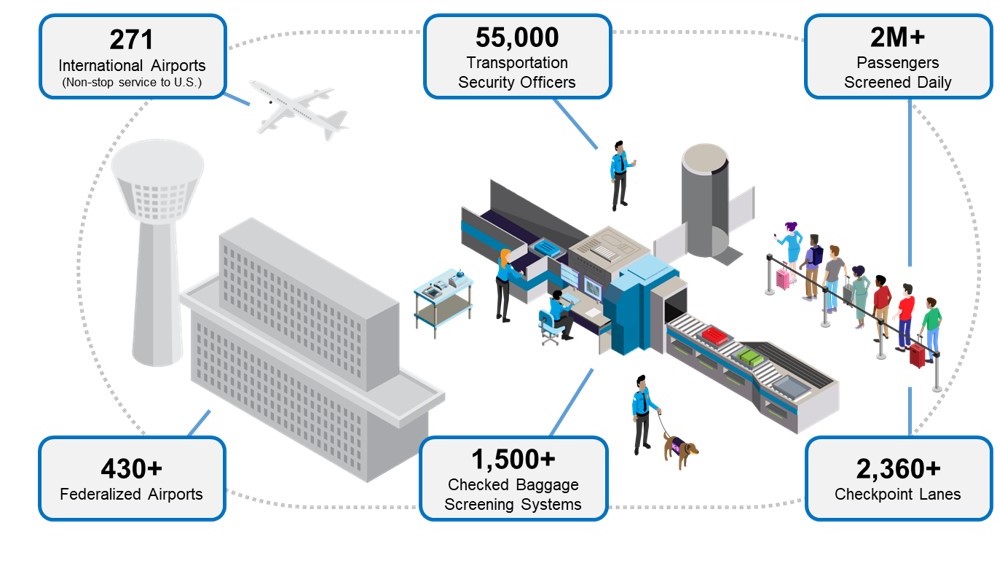Open Architecture is a design approach in which equipment components, such as software and hardware, are standards-based and interoperable to allow a wide range of industry partners to create improved subcomponents (like new detection algorithms, user interfaces, or reporting systems).
Vision
TSA’s vision is a connected transportation security system of systems in which state-of-the-art solutions are quickly adopted to address emerging threats and enables a dynamic screening environment.

Common and Accessible Data and Interface Standards
Open Architecture success depends on common and accessible data and interface formats established in partnership with industry stakeholders. For TSA, the Digital Imaging and Communications in Security (DICOS) Standard and Open Platform Software Library (OPSL) provide the foundational common and accessible data and interface standards to enable a connected transportation security system of systems.
